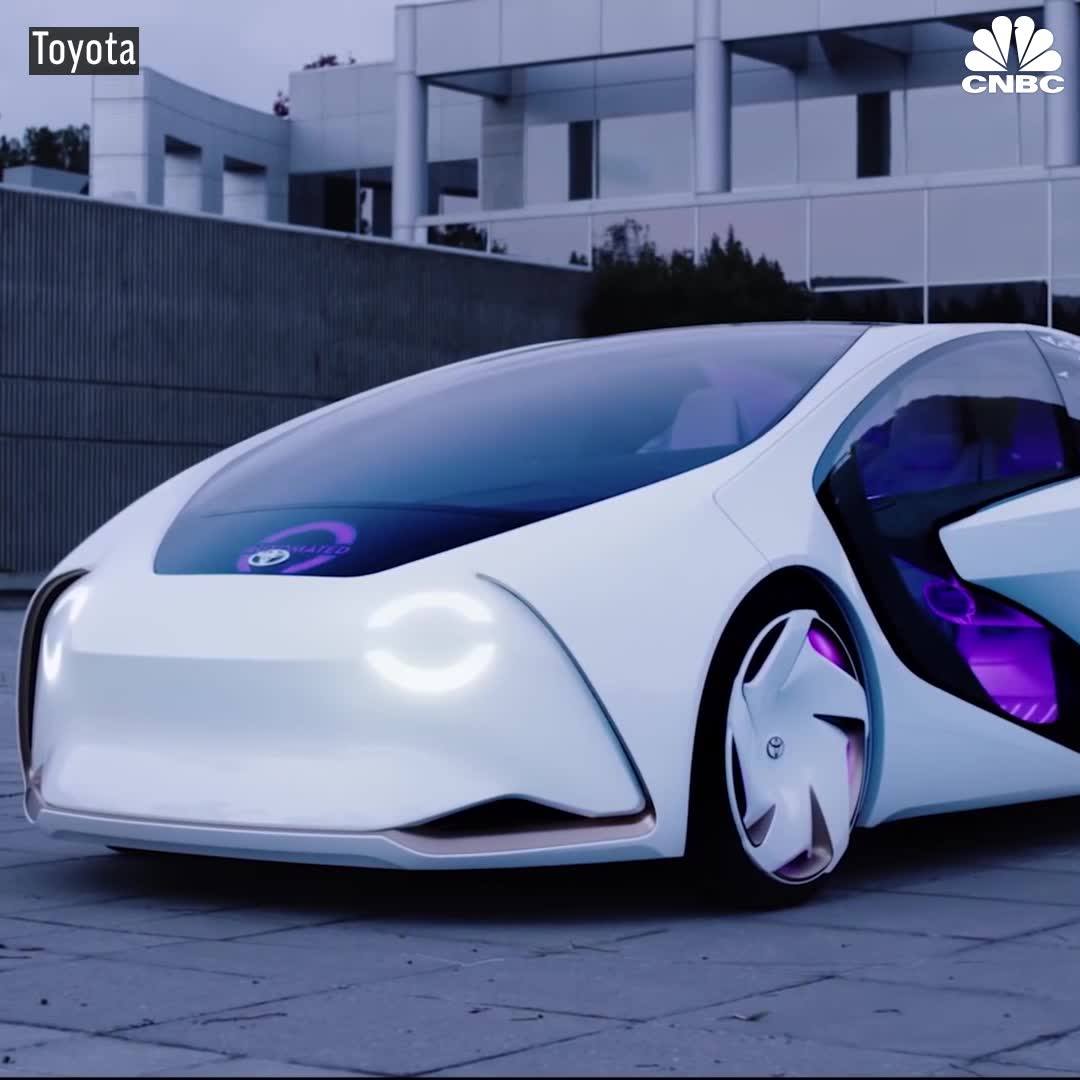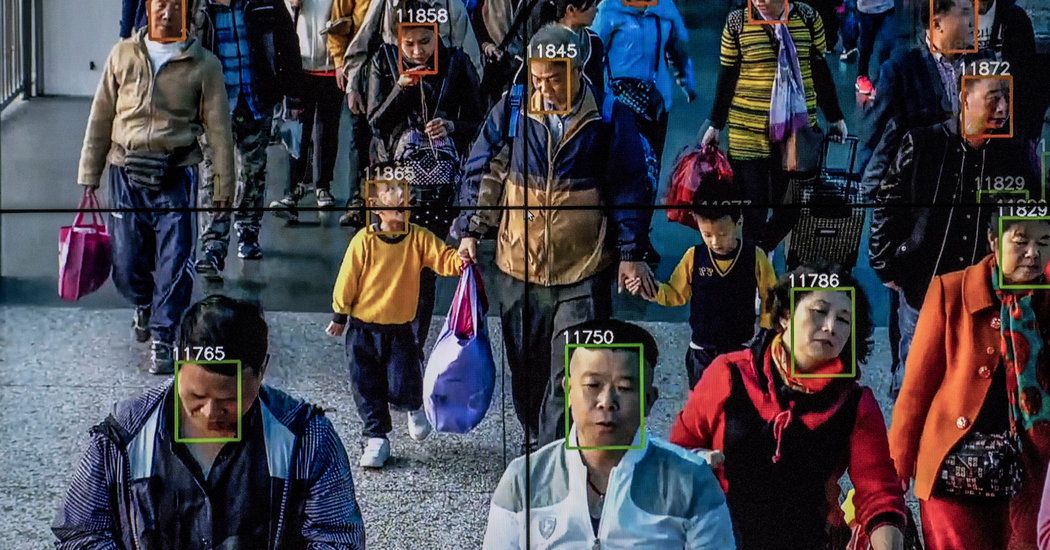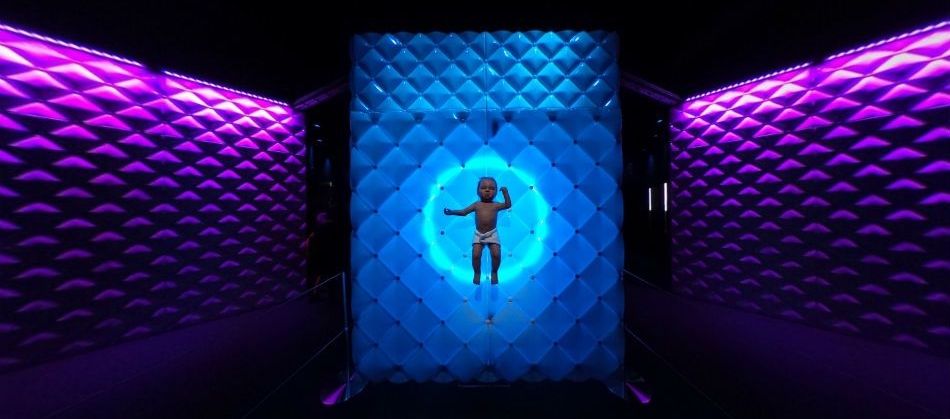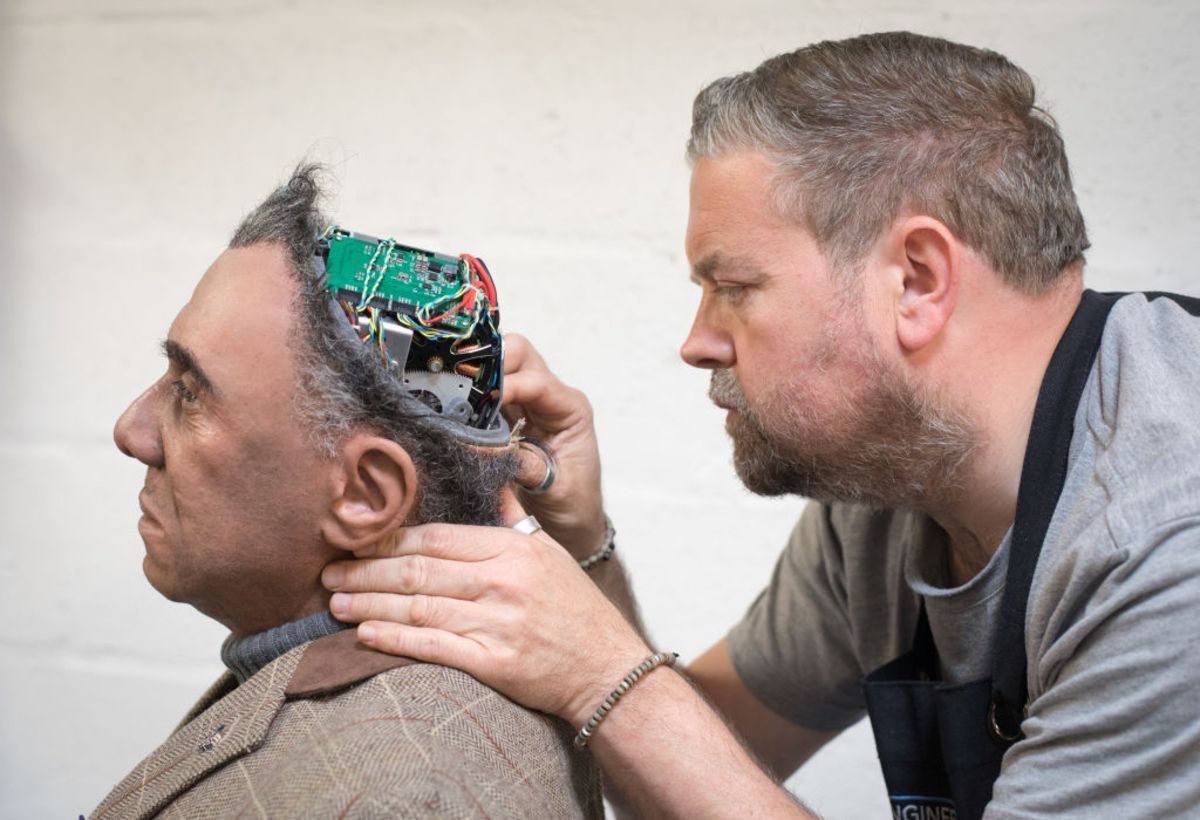Click on photo to start video.
The Toyota Concept-i has a built in AI technology to keep you safe and wants to be your friend. (via CNBC)


Researchers used magnetically driven microrobots to carry cells to predetermined spots within living zebrafish and mice, they report in Science Robotics today (June 27). The authors propose using these hair-width gadgets as delivery vehicles in regenerative medicine and cell therapy.
The scientists used a computer model to work out the ideal dimensions for a microrobot; spiky, porous, spherical ones were deemed best for transporting living cells. They printed the devices using a 3D laser printer and coated the bots with nickel and titanium to make them magnetic and biocompatible, respectively. An external magnetic field applied to the animal then leads the microrobots.
To begin with, the research team tested the ability for the robots to transport cells through cell cultures, blood vessel–like microfluidic chips, and in vivo in zebrafish. Further, they used these microrobots to induce cancer at a specific location within mice by ferrying tumor cells to the spot. The team observed fluorescence at the target site as the labeled cancer cells proliferated.

With millions of cameras and billions of lines of code, China is building a high-tech authoritarian future. Beijing is embracing technologies like facial recognition and artificial intelligence to identify and track 1.4 billion people. It wants to assemble a vast and unprecedented national surveillance system, with crucial help from its thriving technology industry.
Beijing is putting billions of dollars behind facial recognition and other technologies to track and control its citizens.
Tactical Robotics’ Cormorant drone design allows it to navigate tight areas where a helicopter’s blades would get caught on the environment. The remote-controlled military drone can transport two injured people from a battle zone. The Israeli-based company believes the drone could one day also be used to inspect bridges, deliver medical supplies and spray crops.
Elon Musk Wants You to Watch ‘Do You Trust This Computer?’ in Memory of Stephen Hawking, and It’s Free.
Because “nothing will affect the future of humanity more than digital super-intelligence,” Elon Musk thinks you should watch Chris Paine’s artificial-intelligence movie “Do You Trust This Computer?” And, wouldn’t you know it, the film is streaming for free until later tonight.
Here’s the synopsis: “Science fiction has long anticipated the rise of machine intelligence. Today, a new generation of self-learning computers has begun to reshape every aspect of our lives. Incomprehensible amounts of data are being created, interpreted, and fed back to us in a tsunami of apps, personal assistants, smart devices, and targeted advertisements. Virtually every industry on earth is experiencing this transformation, from job automation to medical diagnostics, even military operations. ‘Do You Trust This Computer?’ explores the promises and perils of our new era. Will A.I. usher in an age of unprecedented potential, or prove to be our final invention?”
Nothing will affect the future of humanity more than digital super-intelligence. Watch Chris Paine’s new AI movie for free until Sunday night at http://doyoutrustthiscomputer.org/watch
[email protected]
Telegram Group: https://telegram.me/mcgregorrecruitme…
Telegram Channel: https://telegram.me/vacanciesinuae
LinkedIn Group: https://www.linkedin.com/groups/12102…

We’ve heard so many stories lately about the frankly horrifying degree to which facial recognition leads to tracking or privacy invasions. But a startup specializing in AI is instead leveraging facial recognition technology to find human trafficking victims.
Marinus Analytics is a startup that licenses technology to law enforcement with the express purpose of fighting human trafficking. It’s founder and CEO, Emily Kennedy, created a program called Traffic Jam during her time at Carnegie Mellon that uses AI tools to identify victims. Nowadays, Traffic Jam is available to any law enforcement agency that works with Marinus.
According to Marinus’ website:

A new study by Caltech researchers has shown that the A.I. they created is fully capable of reading handwritten numbers.
Scientists have been able to create a completely artificial neural network by using DNA and a test tube, and the results of this AI experiment have been nothing short of astonishing.
During experiments, this artificial intelligence was able to accurately assess handwritten numbers, with scientists suggesting that this research shows that humans are edging ever closer to taking AI and placing it in organic circuits, as the Daily Mail reports.

I’m not that interested in this on the movie end, because i think most movies already suck, and couldnt really get any worse.
AUDREY HEPBURN DIED in 1993, but in 2013 she nevertheless starred in an advertisement for Galaxy, a type of chocolate bar. She was shown riding a bus along the Amalfi coast before catching the eye of a passing hunk in a convertible. In 2016 Peter Cushing, who died in 1994, reprised his role as the villainous Grand Moff Tarkin in the Star Wars film “Rogue One”. Such resurrections are not new, but they are still uncommon enough to count as news. Yet advances in special effects—and, increasingly, in artificial intelligence (AI)—are making it ever easier to manufacture convincing forgeries of human beings.
In recent months this has led to concern that propagandists will use the technology to generate videos in which political figures appear to say compromising things. A video created by BuzzFeed, a news website, in April shows Barack Obama apparently saying “We’re entering an era in which our enemies can make it look like anyone is saying anything at any point in time,” for example. In May a Belgian political party produced a fake video of Donald Trump saying implausible things about Belgium’s climate policy. In both cases the video looks slightly off, and the voice is provided by an impersonator. But the technology is improving fast, prompting a dozen AI researchers to place bets on whether a fake video will disrupt America’s midterm elections later this year. (Tim Hwang, a Harvard academic, is overseeing the wager.)
Whatever happens in the arena of fake news, the same techniques are sure to revolutionise fiction of a different kind, in the form of film and television. In future, actors need not be creatures of flesh and blood, but could, like so many other things in an increasingly digitised world, exist as nothing more than long strings of 1s and 0s. Such digital actors would sit quietly in digital storage systems until their services were needed—there would be no need for luxury trailers, chefs and make-up people.


It’s amusing that these people know where this is headed, but arent interested enough to stop it.
The co-chief investment officer and co-chairman of Bridgewater Associates shared his thoughts in a Facebook post on Thursday.
Dalio says he was responding to a question about whether machine intelligence would put enough people out of work that the government will have to pay people to live with a cash handout, a concept known as universal basic income.
My view is that algorithmic/automated decision making is a two edged sword that is improving total productivity but is also eliminating jobs, leading to big wealth and opportunity gaps and populism, and creating a national emergency.